Calathea "Medallion": what it looks like, features of care and treatment of diseases
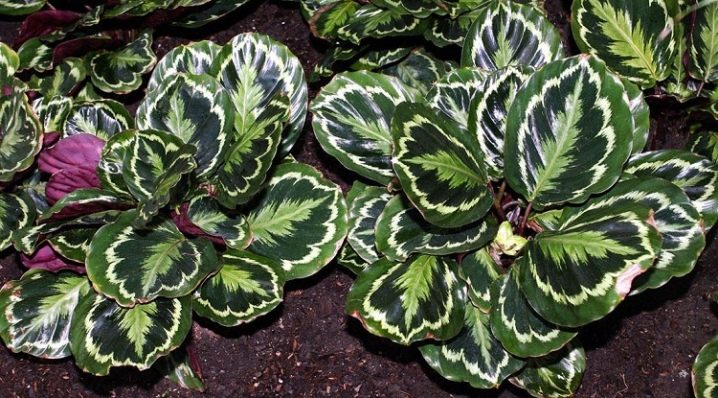
Calathea "Medallion" or Calathea is a fairly popular indoor plant that is loved by flower growers for its spectacular appearance and original colors. Caring for her at home is not considered something very difficult, but often housewives are faced with the fact that the leaves of a flower dry, curl, it loses its appearance. This is because not everyone, attracted by the unusual appearance of the plant, is studying what kind of care a gorgeous beauty needs. Before purchasing this flower, be sure to study what exactly is required for this representative of the flora in order to delight with its beauty and healthy appearance.
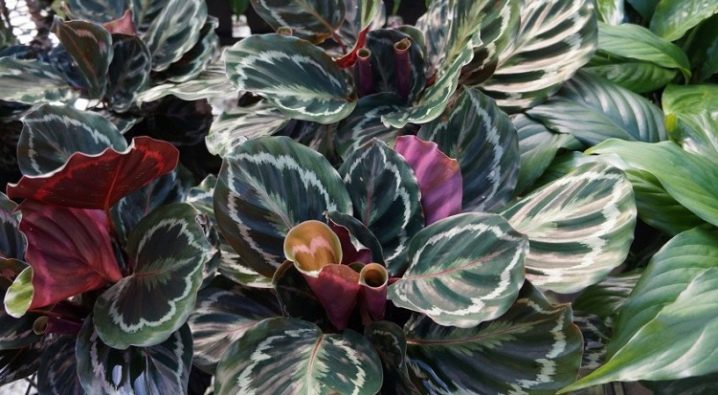
Description
Originally from the South American continent, Calathea belongs to the Marantov family. Not everyone dares to have a luxurious calathea, despite the original and noticeable appearance. This flower has the following distinctive features:
- a variety of foliage shades - from brown to rich green, there are a lot of flower varieties - more than 150;
- foliage in the shape of an oval, wide type, decorated with a beautiful pattern of light pinkish streak-streaks;
- flowering is short-lived, inflorescences are small, white, yellow and orange.
Calathea leaves have a unique sensitivity to light - in the morning the foliage falls and shows its luxurious ornament, in the evening it rises and hides it.
Since outwardly the evening composition resembles hands reaching for the sky, the flower was named - prayer. It is also called roseolicta.
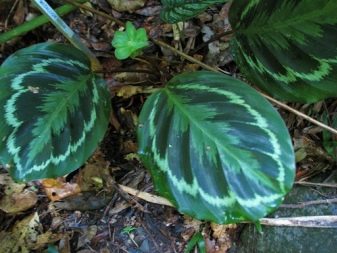
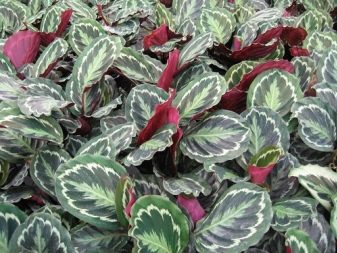
Home cultivation
Caring for a plant requires enough effort and effort, so it is not recommended to start a calathea for those who are not ready to devote enough time to it. If you follow all the rules, even a novice grower will succeed in growing. Moreover, the calathea will thank the attentive owners with a unique flowering, unlike any others.
First of all, you need to choose a place and think over the lighting for a capricious beauty, you need to do this before purchasing a flower.
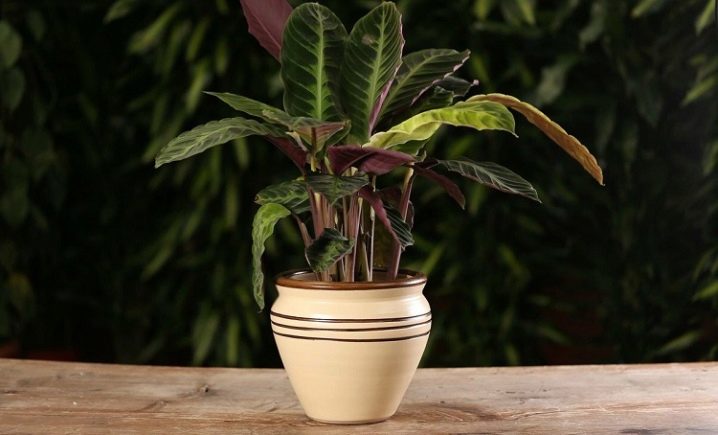
Light and place
Most often, the calathea is located on the windows, but in this case, the direction should be either east or west. If possible, you can place the plant on special stands, shelves or pots near windows. In any case, a lot of light of the diffused type is needed, direct rays should be avoided, in the sun the flower can be burned. But the shadow is also an unsuitable place, in the twilight the development of the plant will slow down, there may be a lack of flowering, the leaves will rise not only in the evening, they will become faded.
If the only option for the location of the calathea is a window facing south, then make sure that there is an obstacle between it and the sun.
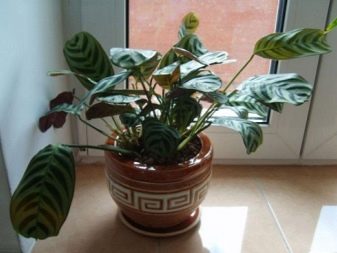
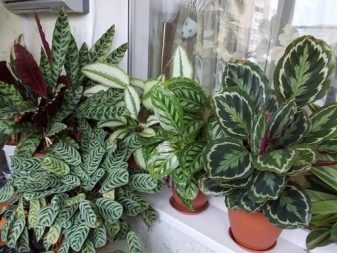
Temperature
Its tropical origin does not mean that the calathea needs a hot temperature. It is recommended to withstand the mode of the moderate type, ensure the absence of drops, and protect from drafts. To make the flower feel comfortable and develop at a normal pace, the following temperature ranges should be adhered to:
- summer - from +18 to +25 degrees;
- winter - from +16 to +23 degrees.
Important! If ventilation is necessary, it is better to remove the flower for a while in a safe place.

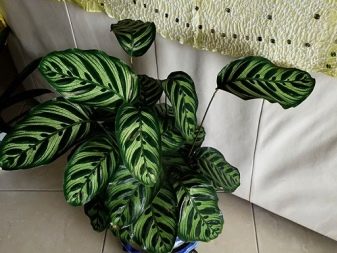
Humidity
Moisture is a slightly different story. A tropical flower just needs increased air humidification.The hygrometer should show the highest degree - 80–90%. If the apartment is dry, the roseolicta begins to fade, the foliage falls off. This is a reason to think before purchasing, because if there is no way to increase the humidity in the room, it is better to opt for a less whimsical pet. It is good to breed such plants in special conservatories and greenhouses, where high humidity does not harm the household.
However, you should not be upset if you are aiming at breeding this particular flower. Try to arrange a special florarium. For this purpose, you can also use aquariums, the main thing is that they allow you to grow this plant in conditions that are comfortable for it. In addition, you can periodically produce forced moistening, that is, spray calathea. After water procedures, be sure to wipe the foliage so that no water remains on it.
Another option for moisturizing is a damp sponge, which is used to wipe the smooth surface of the leaves.
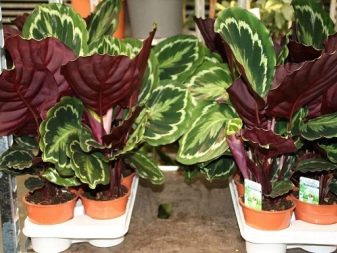

Watering
The quality care of this representative of the flora directly depends on the quality of irrigation. Ordinary tap water should be excluded, filtered and heated to a warm state. Rainwater is ideal. If possible, the plant will be grateful to you. The regularity of watering is also important and consists in the following:
- spring-summer period - 1 time in 2 days;
- autumn-winter period - once every 7 days.
Important! Watering should be moderate, you do not need to fill the flower so that the water stagnates. After watering, be sure to remove moisture from the pan, otherwise the root system will begin to rot.
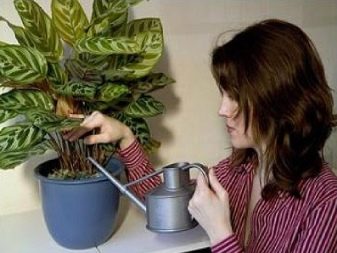
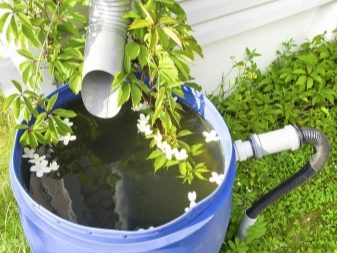
How to feed?
Experts recommend using liquid-type top dressing, such as:
- Agricola Aqua;
- Etisso;
- Pokon;
- Bona Forte.
The choice in specialized stores is quite wide. Pay attention to the intended use of fertilizers... It should be intended for decorative, deciduous flora. Carefully study the instructions and strictly follow its recommendations, since different types of fertilizers are used depending on the characteristics. For a flower, both overfeeding and a lack of trace elements are equally harmful. Therefore, fertilize calathea regularly, but not often, it is better to stick to the schedule - during the period of active growth, twice a month.
In the autumn-winter time, feeding is not performed.
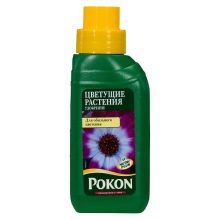
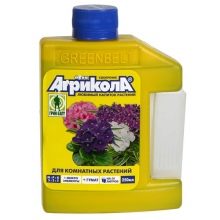
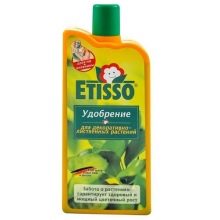
Pruning
Florists believe that it is not necessary to cut the calathea. It is enough to monitor the dying off of the leaves and remove them in a timely manner. The removal method is very simple - you tear off the dried sheet with your hands, without cutting. It is important to do this carefully and not harm healthy foliage.
Removal of diseased and dry leaves should be carried out year-round as needed.
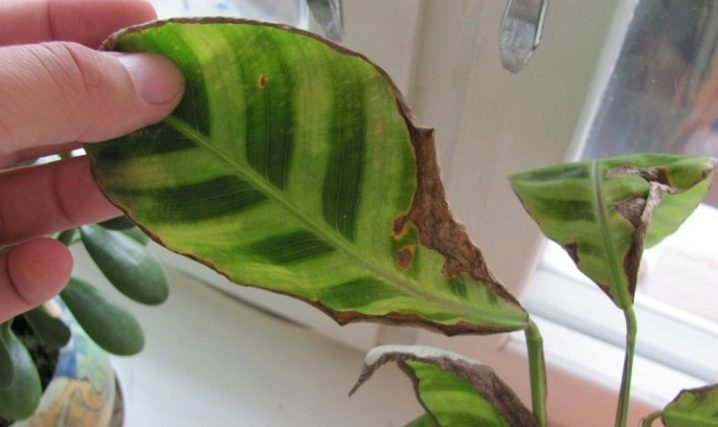
Transfer
While developing, the plant degrades the quality of the soil, therefore, it is periodically necessary to transplant, otherwise it will stop developing and get sick. It is recommended to do this every spring until the age of four, and then every two years. To transplant a flower correctly, you should adhere to the following algorithm of actions:
- choose a capacity wider than the previous one;
- introduce pine bark or charcoal into the bud;
- pick up loose soil of a slightly acidic type, it is better to buy a special one for rhododendrons in the store;
- self-preparation of the soil consists of mixing equal parts of leaf-type soil, peat and humus with half of the sand;
- a drainage layer of broken brick, expanded clay or pebbles at the bottom of the tank is required;
- when transplanting, the soil is not cleared from the rhizomes.
The first planting of a flower should not be done immediately after purchase, the plant should be given time to adapt. After 1-2 weeks, plant it in a permanent place.
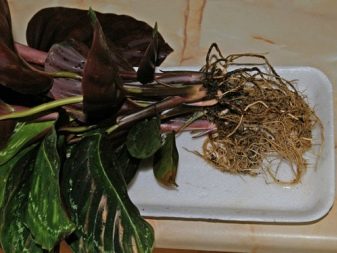
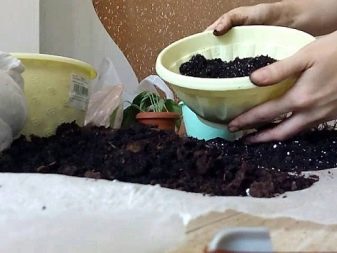
How to reproduce?
Reproduction is done in different ways.
- Division... Suitable for beginner florists, can be carried out during the transplantation process. Part of the roots is separated into separate small containers. Place the pot in a dark, warm place.
- Cuttings... The above-ground part of the plant with growth points is cut and sent to the moist soil under the film until the roots appear. Then the polyethylene is removed.
- Sheet method... It is necessary to cut off a leaf and plant it in a small container, then moisten it and put it in a warm place.
- Seminal... This is the most difficult method and is suitable for experienced gardeners or those willing to devote a lot of time and energy to the procedure. In this way, you can breed a completely new variety of flower. First of all, they prepare the soil with sand, moisten it, then sowing takes place. Then the pot is covered with plastic or glass to create a greenhouse effect. After the ascent, the coverlet is removed and the first leaves are waited, then planted separately.
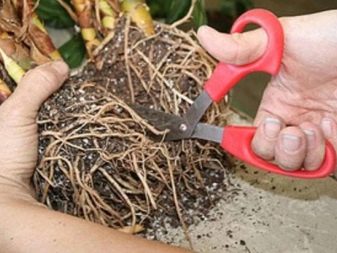
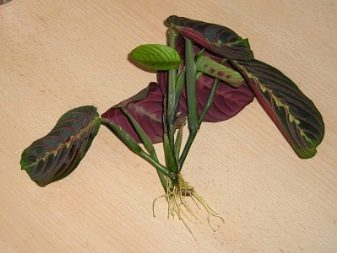
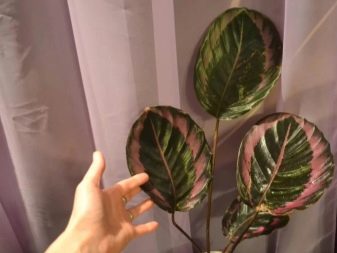
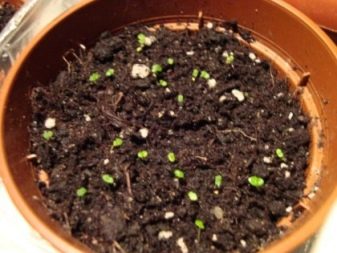
Diseases and pests
It is worth considering the most common diseases and pests.
- The most common pest attacking calathea is thrips... They appear most often with insufficient humidity, but in the presence of high temperatures. If the plant is dotted with light spots, it's time to take action. The spots can change color to a darker color, after which the foliage will begin to dry and fall off. Special means - insecticides, soap solution and top dressing - will help to cope with the problem.
- If the plant is covered with a black film, it means that it is overcome sooty mushroom... The film formation does not allow air circulation, disrupts photosynthesis and the plant dies. A soap solution will help get rid of the misfortune.
- If you notice small brown insects on a flower, this is an invasion scabbards... They suck vital juices from the foliage, after which the leaves dry out. In this case, special means and a soap solution will help.
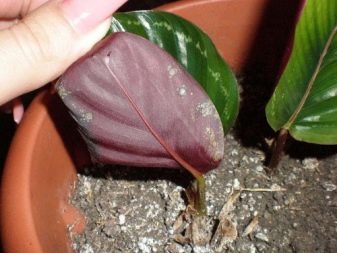
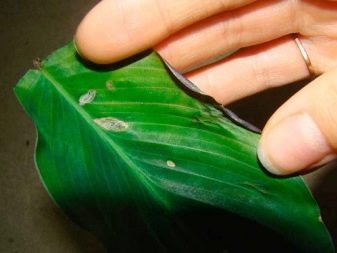
Another questionable symptom is leaf curling and drying. This is a sign that the care of the plant is impaired, the location is wrong. First of all, you should pay attention to the following factors:
- high humidity;
- draft;
- sunshine;
- irregular or insufficient watering.
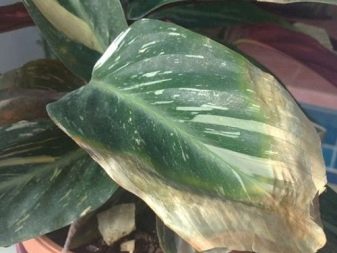

If you eliminate all these shortcomings, calathea will gradually return to its original state.
You can find out how to transplant calathea by watching the video below.





























The comment was sent successfully.